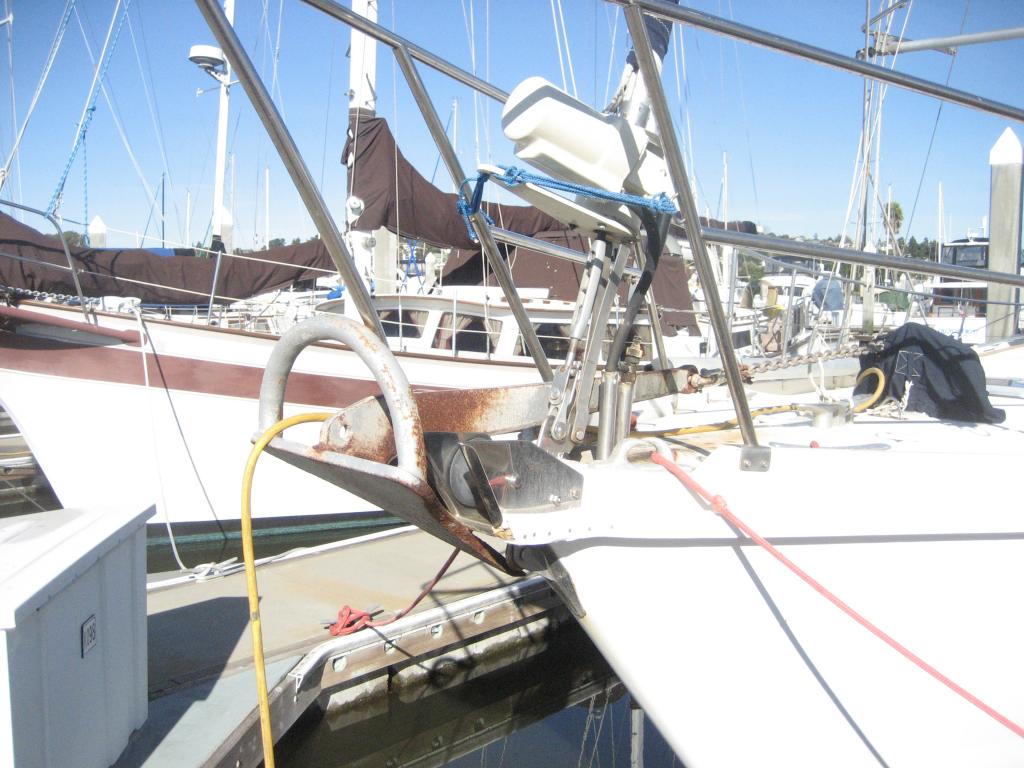Djbangi Wrote;
Peter, I think your categorizing the Super SARCA alongside the Rocna, Supreme and Mantus is the first time I have seen such a grouping. Peter Smith will be having a fit! Apart from other differences the SS has a mini fluke between roll bar and shank that, I believe, stops the anchor settling into soft seabed’s and allows it to roll over. I think this secondary fluke is patented (not that this would stop anyone using something similar.) Maybe Rex can tell us more.
Rex Wrote:
Djbangi, I am not sure if this is worth going through all over again, I have gone over the roll bar thingy many times, no one really seems to be interested, Brian from Fortress has also been also pounding out a message that is marginally related to the following, one more time, Sarca roll bar was before Rocna , Manson Supreme, I am talking probably 10 years.
So we had worked on and developed the roll bar design for many years and found in soft mud just as is what Brian is saying, if landing in a previous dibit , trench, or hollow from the drag of a previous anchor, a roll bar design can end up upside down, this can happen either two ways, it lands upside down or is flipped, the roll bar in soft mud then acts like a rudder and pulls the anchor down upside down creating a very slow drag, So we invented –design and Patented a secondary fluke plate that absolutely works a treat, it lifts the anchor up when its on the roll bar to allow-employ the anchors natural centrifugal weight advantage to right the anchor.
In a change of wind or tide, or both-- Rarely do anchors break out when pivoting around, breaking out is most caused by flipping the anchor, if it is c logged it will drag until most of the previous hold material is dispersed, if in soft mud a roll bar design can drag very slowly for incredibly long distances due to being clogged or upside down unless you give the throttle a stab to right it.
Roll bar anchor designs are all different, just remember this and you will see, easy to make your conclusion when you look at Brian’s graphs as to what choices you have in roll bar anchor designs and as to how they performed.
Roll bar sizes, (I am talking circumference not thickness) The mall roll bar clogs easily and can drag upside down, (end result poor performance) larger roll bar,( better performance due to less clogging but is still prone to dragging upside down).
Now the largest roll bar design on the market, noticeably much larger, has low but consistent performance over the first two roll bar designs, the low holding power in soft mud is marginally due to fluke design and shank base and throat height, the above can be confirmed by looking again at the charts, the other major difference is this, the manufacture of this large roll bar design has done a great job of ensuring the anchor lands the right way up, unlike the other roll bar designs that can land on their side or back.
This is why it is a consistent performer, keep in mind they do recommend very big anchors for small boats, just maybe they should have been heavier and larger anchors as to their competitors to produce good figures, (just sayaing) why all of this looks positive the unknown can still, will get you, if a large roll bar design is flipped in soft mud look out, you may then wish you had a smaller roll bar design, as mentioned when on their roll bars create drag, a very slow drag, but an anchor with a larger roll bar will sink-be dragged in deeper creating even more drag and somewhat slower, the larger the roll bar the more difficult to right themselves with a thump of the throttle.
This company has also stated you do not need their roll bar? True until you drift directly over it in a wind shift or tide, then my friends no amount of thumping the throttle will right it. All anchors can drag upside down at some time or another,difference being a roll bar with out a self writng secondary fluke can be a problem.
In firm or hard soils only shallow penetration is needed to supply a sufficient hold of which all three can offer, really not much chance of clogging regardless of roll bar size, they all have very sharp entry points to cope with this and there is really no one with a major advantage over the other.
Yes I know I am an opposition, but I am here in Australia, no threat to anyone, but before the big three roll bar anchors were invented or being marketed worldwide we were selling the original Sarca in New Zealand probably 5 years prior.
Just so you know, the original Sarca was concave before--------- and was a dead ringer, we turned it up the other way into a convex design, as in its original concave format was a mud bucket and clogged in soft mud, fact not fiction.
I included the latter just to give me some credibility on what I have commented on.
You know if you look closely at more than just holding power in Brian's test there really is alot to learn.
Regards Rex.





